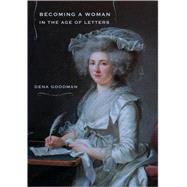
| Acknowledgments | p. vii |
| Note to the Reader | p. xiii |
| Introduction | p. 1 |
| Images | |
| Picturing the Subject: Portrait of a Lady as Letter Writer | p. 19 |
| Education | |
| Designing an Education for Young Ladies | p. 63 |
| Writing as Discipline: Instruction in Penmanship and Orthography | p. 100 |
| Epistolary Education: Learning to Be Natural | p. 133 |
| The World of Goods | |
| Supplying the Female Letter Writer | p. 161 |
| The Writing Desk: Furniture of the Modern Self | p. 199 |
| Letters | |
| Coming of Age: Young Ladies, Privacy, and Epistolary Practice | p. 247 |
| Epistolary Reasoning: Writing about Marriage | p. 274 |
| Marriage, Motherhood, and the Letter-Writing Woman | p. 307 |
| Conclusion | p. 332 |
| Notes | p. 339 |
| Index | p. 377 |
| Table of Contents provided by Ingram. All Rights Reserved. |
The New copy of this book will include any supplemental materials advertised. Please check the title of the book to determine if it should include any access cards, study guides, lab manuals, CDs, etc.
The Used, Rental and eBook copies of this book are not guaranteed to include any supplemental materials. Typically, only the book itself is included. This is true even if the title states it includes any access cards, study guides, lab manuals, CDs, etc.